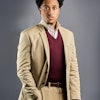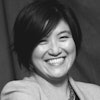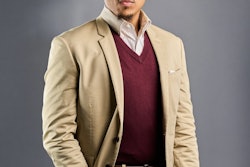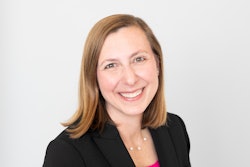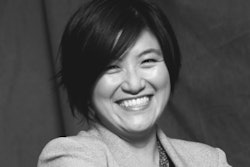For many people, America feels heavy. Whether mounting political challenges or the general decline in civility, the daily and nearly hourly updates from the political world make it difficult to find a moment of solitude.
But last week revealed the power of art to serve at once as both a source of affirmation and refuge. Noted actor, activist and philanthropist Danny Glover once said, “Art is a way of understanding, of confronting issues and confronting your own feelings – all within the realm of the capacity it represents.”
Most know Glover from his iconic roles in films such as The Color Purple (Mister. M.I.S.T.E.R Mister), Lethal Weapon and Beloved. But Glover has a longstanding commitment to using his artistic platform to address key domestic and international challenges.
I had the opportunity to host a recent Fireside Chat with him on the meaning of freedom against the backdrop of social and political machinations that seem to deny Black humanity. Glover walked through the writings of Frantz Fanon and Amilcar Cabral. He exalted the understated brilliance of Paul Robeson and asserted the resilient spirit of the Haitian people and Toussaint L’Ouverture. He applauded the groundbreaking work of filmmaker Yance Ford.
Glover celebrated the time that he and friend Harry Belafonte spend with younger artists such as Common, Usher, Colin Kaepernick and John Legend to highlight the value of intergenerational collaborations. The common thread was the view that progress demands a collective commitment to amplifying various sites of liberation.
In light of Frederick Douglass’s 200th birthday, I asked Glover how he would respond to Douglass’s admonition that power concedes nothing without a demand. When I asked what it is we should be demanding and from whom, Glover’s response was simple and poignant: “It’s always been about demanding truth and justice for all people.”
Art has the power to demand truth and justice that isn’t bound by the markers of class, race, region, gender identity or tradition. Art, in all its varied forms, is a form of resistance.
My hour-long conversation with Glover seemed particularly prescient given the recent unveiling of the portraits of Barack and Michelle Obama for the Smithsonian’s National Portrait Gallery. The portraits, created by Kehinde Wiley and Amy Sherald, respectively, have prompted a great deal of reflection and critique on social media.
From aesthetes versed in the works of Basquiat and Bearden to casual consumers who remember when JJ Evans painted a portrait of Ned the Wino as Black Jesus, art appreciation is inherently subjective. Good art is supposed to provoke discussion and challenge the viewer to form their own connections. The significance of these particular works of art is much greater than whether we “like” them. More than just works of art, they are acts of rebellion. Rebellion against limiting stereotypes that seek to constrain our vision of democracy. Rebellion against the limited definition of what it means to look and be presidential. And rebellion against the historical political exclusion of diverse communities.
The juxtaposition of Wiley’s bold colors and design against Sherald’s muted tones and subtle allusions capture the eye while the features embedded in the pieces capture the imagination. The mélange of flowers from three distinct yet interrelated sites of Barack Obama’s political maturation provides both frame and context.
The portrait of America’s first Black First Lady – Michelle Lavaughn Robinson from the Southside of Chicago – is a nod to the generations of Black women who made this first possible. From the geometric designs of the dress that pay homage to the storied quilt makers of Gee’s Bend, Alabama to the choice of bare arms, every stroke of that portrait is a deliberate prayer of affirmation.
In her remarks at the 2014 memorial service for Dr. Maya Angelou, Michelle Obama discussed the challenge of having every aspect of her womanhood picked apart on the campaign trail. Indeed, her decision to wear a sleeveless sheath to the 2009 State of the Union address led critics to question whether the Obamas were ready for the big leagues. Silly.
Michelle Obama has long recognized the power of symbols. Her speech at the unveiling highlighted the power of symbols. She reflected: “I am humbled, I am honored, I am proud. I am so incredibly grateful to all the people who came before me in this journey. The folks who built the foundation upon which I stand.” She further stated, “I am also thinking about all the young people, particularly girls and girls of color, who in years ahead will come to this place and they will look up and see an image of someone who looks like them hanging on the wall of this great American institution.”
Whether through fashion or film, documentaries or dance, portraits or pop music, art can be a subversive political force. In this ever-changing political and media landscape, art weaves together various threads of our collective experience to tell an elaborate story. Keep resisting.
Dr. Khalilah L. Brown-Dean is an associate professor of Political Science at Quinnipiac University, where she writes about American politics, political psychology and public policy.



